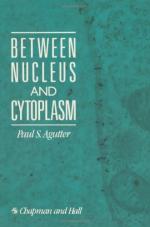|
This section contains 305 words (approx. 2 pages at 300 words per page) |
Endoplasm is the liquid material in the center of cells outside the nucleus. It is the fluid matrix within which all the cytoplasmic organelles are found. Essentially synonymous with the term protoplasm, this rich, colloidal mixture of proteins, carbohydrates, lipids, and nucleic acids is the very stuff of life; it is the medium in which the myrid chemical reactions required for life occur. In large cells such as amoebae and giant algal cells, the endoplasm can be seen to flow back and forth through the cell interior by cytoplasmic streaming caused by contraction of the cytoskeleton. This motion probably helps distribute nutrients and newly synthesized products throughout the cell. The endoplasm is not, however, a simple, continuous space. It is divided into many individual compartments by the membranous bags and tubules of the endoplasmic reticulum and other organelles. Within these separate compartments, mutually incompatible enzymatic reactions can take place simultaneously while raw materials and products can be concentrated and stored until they are needed.
Most biologists now use the words protoplasm, endoplasm, and cytoplasm interchangeably. Perhaps the most important reason to retain the term endoplasm is that it helps to explain the origins of the name endoplasmic reticulum for the predominant membrane compartments found in this region. Cell biologists once made a distinction between the endoplasm and the ectoplasm because they looked so different under the light microscope. We now know that the main differences between these regions is that the peripheral mat of cytoskeletal elements just under the plasma membrane of some cells filters out larger organelles and elements of the cytoplasm such as mitochondria. Thus the ectoplasm appears to be optically clear because it contains only small, soluble molecules while the endoplasm is seen, even in the light microscope, to be packed with a wide variety of macromolecules and membranous organelles.
|
This section contains 305 words (approx. 2 pages at 300 words per page) |


